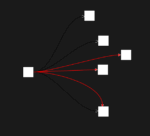“Zombie Data” lurks in the shadows—eating up storage, bloating dashboards, slowing down queries, and quietly sabotaging your decision-making. It’s not just unused or outdated information. Zombie Data is data that should be dead—but isn’t. And if you’re running analytics or managing software infrastructure, it’s time to bring this data back to life… or bury it for good.
What Is Zombie Data?
Zombie Data refers to data that is no longer valuable, relevant, or actionable—but still lingers within your systems. Think of deprecated tables in your data warehouse, legacy metrics in your dashboards, or old log files clogging your pipelines. This data isn’t just idle—it’s misleading. It causes confusion, wastes resources, and if used accidentally, can lead to poor business decisions.
Often, Zombie Data emerges from rapid growth, lack of governance, duplicated ETL/ELT jobs, forgotten datasets, or handoff between teams without proper documentation. Left unchecked, it leads to higher storage costs, slower pipelines, and a false sense of completeness in your data analysis.
Signs You’re Hosting Zombie Data
Most teams don’t realize they’re harboring zombie data until things break—or until they hire an expert to dig around. Here are red flags:
- Dashboards show different numbers for the same KPI across tools.
- Reports depend on legacy tables no one remembers building.
- There are multiple data sources feeding the same dimensions with minor variations.
- Data pipelines are updating assets that no reports or teams use.
- New employees ask, “Do we even use this anymore?” and no one has an answer.
This issue often surfaces during analytics audits, data warehouse migrations, or Tableau dashboard rewrites—perfect opportunities to identify what’s still useful and what belongs in the digital graveyard.
The Cost of Not Acting
Zombie Data isn’t just clutter—it’s expensive. Storing it costs money. Maintaining it drains engineering time. And when it leaks into decision-making layers, it leads to analytics errors that affect everything from product strategy to compliance reporting.
For example, one client came to us with a bloated Tableau environment generating conflicting executive reports. Our Advanced Tableau Consulting Services helped them audit and remove over 60% of unused dashboards and orphaned datasets, improving performance and restoring trust in their numbers.
Zombie Data doesn’t die on its own. You have to hunt it.
How to Identify Zombie Data
- Track Usage Metrics
- Most platforms offer metadata APIs or usage logs. Tableau, Power BI, Snowflake, and PostgreSQL all provide access to view/query-level metrics. Start by filtering out unused dashboards, views, tables, or queries over the past 90+ days.
- Build an Inventory
- Create a centralized inventory of all data assets: dashboards, datasets, views, schemas. Mark them as active, questionable, or deprecated based on access logs, ownership, and business context.
- Talk to the Humans
- Automation only gets you so far. Schedule short interviews with report consumers and producers. Ask what they actually use, what feels duplicated, and what doesn’t serve any purpose anymore.
- Visualize Dependencies
- Use tools or scripting to trace lineage. Our Data Engineering Consulting Services often include mapping dependency chains to identify upstream pipelines and unused downstream nodes.
- Search for Data Drift
- Zombie Data often doesn’t update correctly. Build alerting mechanisms to flag stale tables, schema mismatches, or declining data quality metrics.
How to Remove It Safely
Once you’ve tagged the suspects, here’s how to bury them:
- Archive Before Deleting
- Push to long-term, cold storage before outright deletion. This gives you a buffer if someone realizes they need it… after it’s gone.
- Communicate Across Teams
- Notify impacted teams before removing anything. Zombie Data has a habit of being secretly critical to legacy processes.
- Automate and Document
- Build scripts that deprecate and archive unused datasets on a regular cadence. Document decisions in a central location—especially in shared BI tools.
- Set Retention Policies
- Not all data needs to live forever. Implement retention logic based on business needs and compliance, and automate expiration when possible.
Ongoing Prevention
Zombie Data is a recurring problem unless you implement a culture of data hygiene. That means regular audits, ongoing governance, and tight integration between engineering and analytics teams.
Teams working with platforms like MySQL, PostgreSQL, or Node.js-backed ETL pipelines can prevent zombie data from spawning by introducing data validation layers and robust logging—areas where our MySQL Consulting Services and backend solutions have helped clients automate their cleanup processes long-term.
Final Thoughts
Zombie Data is the silent killer of modern analytics maturity. It’s easy to ignore, tricky to find, and dangerous when left unchecked. But with the right tools, strategy, and a bit of curiosity, any team can begin the cleanup process and reclaim performance, accuracy, and trust in their data systems.
If you’re seeing signs of Zombie Data in your ecosystem, it might be time to bring in a fresh pair of eyes. Whether it’s through analytics audits, warehouse cleanups, or dashboard rewrites—removing the undead from your stack is one of the fastest ways to improve clarity, speed, and strategic impact.
—
Need help auditing your data ecosystem? Let’s talk about how we help organizations remove noise and unlock clarity with real-time advanced analytics consulting.

























